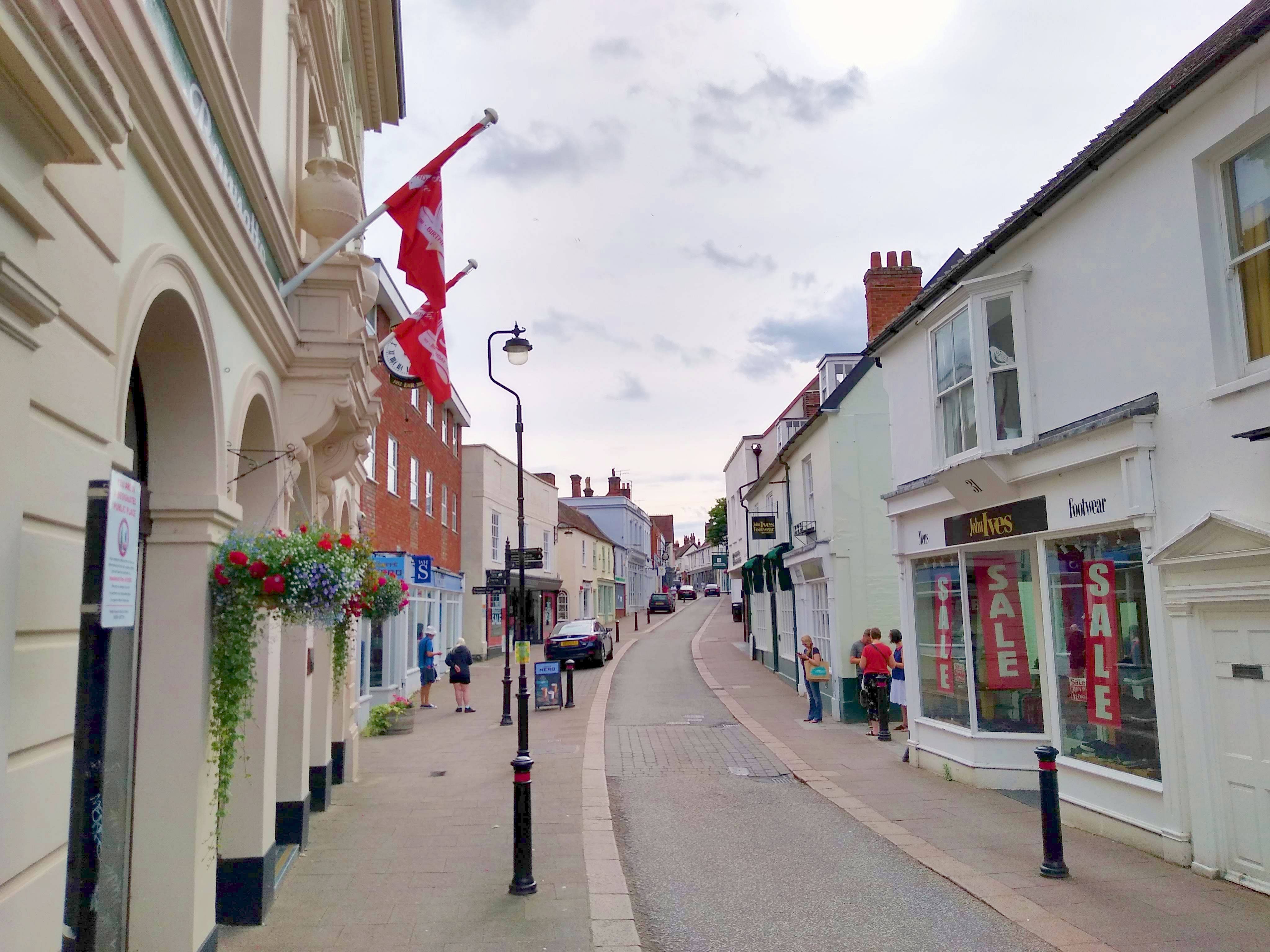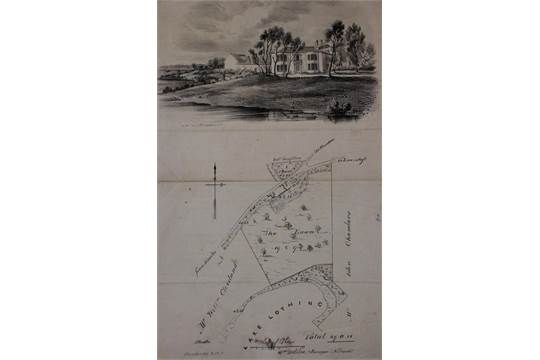|
List Of Suffolk First-class Cricketers
This is a list of cricketers who played for Suffolk cricket teams in first-class cricket matches. Suffolk county cricket teams, Suffolk teams played four matches which have been classified as first-class cricket during the 19th century.First-class matches played by Suffolk (England) CricketArchive. Retrieved 2020-12-27. A total of 26 men played in the four matches for Suffolk, with just one, Fuller Pilch, playing in all four. All four of the matches which Suffolk played and which are considered first-class were played against Marylebone Cricket Club, MCC. The first pair of matches took place in 1830, the first in June at Lord's, followed by a re-match at Cemetry Road, Field Lane at Bury St Edmunds. These were followed by a second pair of first-class matches at the same venues in 1 ... [...More Info...] [...Related Items...] OR: [Wikipedia] [Google] [Baidu] |
Suffolk County Cricket Teams
Suffolk county cricket teams were the cricket teams that represented the historic county of Suffolk before the first official formation of Suffolk County Cricket Club in 1864. The earliest known reference to cricket in Suffolk is from 1743 and the first mention of a Suffolk representative team is in 1764, with Suffolk playing against Norfolk at Bury St Edmunds racecourse on 23 August. Norfolk won this match, which was reported in the '' Gazetteer & London Daily Advertiser'' on Tuesday 28 August. Suffolk played two further matches against Norfolk on 10 and 12 September at Scole, Norfolk. A team representative of Suffolk is next recorded as playing in 1827 against the Marylebone Cricket Club (MCC). It was during this time that the Bury St Edmunds club became prominent, its reputation enhanced when Fuller Pilch joined in 1824. It was the Bury Club, as it was often called,ACS, ''Important Matches, pp. 14–15. playing under the name of Suffolk, that played two first-class matches ... [...More Info...] [...Related Items...] OR: [Wikipedia] [Google] [Baidu] |
CricInfo
ESPN cricinfo (formerly known as Cricinfo or CricInfo) is a sports news website exclusively for the game of cricket. The site features news, articles, live coverage of cricket matches (including liveblogs and scorecards), and ''StatsGuru'', a database of historical matches and players from the 18th century to the present. , Sambit Bal was the editor. The site, originally conceived in a pre-World Wide Web form in 1993 by Simon King, was acquired in 2002 by the Wisden Grouppublishers of several notable cricket magazines and the Wisden Cricketers' Almanack. As part of an eventual breakup of the Wisden Group, it was sold to ESPN, jointly owned by The Walt Disney Company and Hearst Corporation, in 2007. History CricInfo was launched on 15 March 1993 by Simon King, a British researcher at the University of Minnesota. It grew with help from students and researchers at universities around the world. Contrary to some reports, Badri Seshadri, who was very instrumental in CricInfo's e ... [...More Info...] [...Related Items...] OR: [Wikipedia] [Google] [Baidu] |
Woodbridge, Suffolk
Woodbridge is a port and market town in the East Suffolk district of Suffolk, England. It is up the River Deben from the sea. It lies north-east of Ipswich and forms part of the wider Ipswich built-up area. The town is close to some major archaeological sites of the Anglo-Saxon period, including the Sutton Hoo burial ship, and had 35 households at the time of the ''Domesday Book'' of 1086. It is well known for its boating harbour and tide mill, on the edge of the Suffolk Coast and Heath Area of Outstanding Natural Beauty. Several festivals are held. As a "gem in Suffolk's crown", it has been named the best place to live in the East of England. Etymology Historians disagree over the etymology of Woodbridge. ''The Dictionary of British Placenames'' suggests that it is a combination of the Old English wudu (wood) and brycg (bridge). However in the Sutton Hoo Societies' magazine ''Saxon'' points out that is no suitable site for a bridge at Woodbridge, or any fordable sites until ... [...More Info...] [...Related Items...] OR: [Wikipedia] [Google] [Baidu] |
William Mathews (cricketer)
William Mathews (born 23 March 1793 at Crondall, Hampshire; died 20 August 1858 at Woodbridge, Suffolk) was an English professional cricketer who played first-class cricket from 1821 to 1830. He was mainly associated with Surrey county cricket teams, Surrey and made 31 known appearances in first-class matches. Mathews took part in the Gentlemen v Players matches between 1824 and 1830, usually representing the Players, but in 1825, he was a given man for the Gentlemen. He played for All-England Eleven, All-England in the 1827 roundarm trial matches and was one of the signatories to the petition after the second game that called upon the authorities to ban roundarm bowling, roundarm.Altham, p.61-62. References External links * Bibliography * Harry Altham, H S Altham, ''A History of Cricket, Volume 1 (to 1914)'', George Allen & Unwin, 1926 * Arthur Haygarth, ''Scores & Biographies'', Volumes 1-2 (1744–1840), Lillywhite, 1862 1793 births 1858 deaths English cricketers Eng ... [...More Info...] [...Related Items...] OR: [Wikipedia] [Google] [Baidu] |
Charles Leech (cricketer, Born 1789)
Charles Denton Leech (18 December 1789 – June 1851) was an English cricketer with amateur status who was associated with Suffolk Suffolk () is a ceremonial county of England in East Anglia. It borders Norfolk to the north, Cambridgeshire to the west and Essex to the south; the North Sea lies to the east. The county town is Ipswich; other important towns include L ... and made his first-class debut in 1830. References 1789 births 1851 deaths English cricketers English cricketers of 1826 to 1863 Suffolk cricketers {{England-cricket-bio-1780s-stub ... [...More Info...] [...Related Items...] OR: [Wikipedia] [Google] [Baidu] |
Edward Leathes
Edward Leathes (10 February 1801 – 11 February 1871) was an English army officer and cricketer. Leathes was born in Bury St Edmunds, Suffolk, the fifth son of George Leathes of the 1st Royal Dragoons, and his wife Mary Moore; Venn gives the year of birth as 1797. His brothers included John Francis Leathes of Herringfleet Hall, and the Rev. Frederick Leathes, Rector of Reedham. He was educated at Bury St Edmunds Grammar School, and matriculated at Christ's College, Cambridge in 1815, where he kept just three terms. He became a Lieutenant in the 1st Royal Dragoons, having joined as a cornet in 1816. His father died in 1817. Leathes bought Normanston(e) Hall, south-west of Lowestoft, in 1832. He died 11 February 1871 at Normanston, and was buried at Herringfleet. Leathes was a cricketer with amateur status who was associated with Suffolk and made his first-class debut in 1830. Leathes married in 1823 Eliza Mary Galloway, daughter of John Galloway of Exeter. They had six sons ... [...More Info...] [...Related Items...] OR: [Wikipedia] [Google] [Baidu] |
North Elmham
North Elmham is a village and civil parish in the English county of Norfolk. It covers an area of and had a population of 1,428 in 624 households at the 2001 census, including Gateley and increasing slightly to 1,433 at the 2011 Census. For the purposes of local government, it falls within the Elmham and Mattishall division of Norfolk County Council and the Upper Wensum ward of Breckland District Council. The village is located along the B1145 a route which runs between King's Lynn and Mundesley. The village is about north of East Dereham on the west bank of the River Wensum. North Elmham was the site of a pre-Norman cathedral, seat of the Bishop of Elmham until 1075. History The name North Elmham comes from the Old English, meaning "village where elms grow" and is first mentioned in 1035. Only ruins now survive of a Norman Chapel which is now looked after by English Heritage. The chapel is on the site of an earlier Anglo Saxon timber cathedral which housed the episco ... [...More Info...] [...Related Items...] OR: [Wikipedia] [Google] [Baidu] |
Henry Knatchbull
Henry Edward Knatchbull (30 August 1808 – 31 August 1876) was an English clergyman and amateur cricketer who played top level matches in the 19th century. Knatchbull was a son of Sir Edward Knatchbull, 8th Baronet and his third wife Mary Hawkins.Henry Edward Knatchbull St John the Baptist Church, Campsea Ashe. Retrieved 2018-03-01. He was born in 1808 at in KentHenry Knatchbull |
John King (Suffolk Cricketer)
John Philip King (1797 – 4 October 1842) was an English cricketer with Amateur status in first-class cricket#Distinction between amateurs and professionals, amateur status who was associated with Suffolk county cricket teams, Suffolk and made his first-class cricket, first-class debut in 1830. References 1797 births 1842 deaths English cricketers English cricketers of 1826 to 1863 Suffolk cricketers {{England-cricket-bio-1790s-stub ... [...More Info...] [...Related Items...] OR: [Wikipedia] [Google] [Baidu] |
William Dorrinton
William Dorrinton (29 April 1809 – 8 November 1848) was an English first-class cricketer who played for Kent, Hampshire, Suffolk and the Marylebone Cricket Club in a 94–match career which began in 1836 and lasted until 1847, a year before his death.Carlaw D (2020) ''Kent County Cricketers A to Z. Part One: 1806–1914'' (revised edition), pp. 149–150.Available onlineat the Association of Cricket Statisticians and Historians. Retrieved 2020-12-21.) While Dorrinton has two first–class wickets to his name, he became a wicket keeper part–way through his career, taking 89 catches and performing 25 stumpings. Early life William Dorrinton was born in West Malling, Kent, in 1809, second son to father Thomas Dorrinton, who himself played two club cricket matches for Rochester against the Marylebone Cricket Club in 1800. William's brother, Alban Dorrinton, was nine years his senior and also played club cricket, and one first–class match for Kent in 1836. William Dorrinton be ... [...More Info...] [...Related Items...] OR: [Wikipedia] [Google] [Baidu] |
William Clarke's All-England Eleven
The All-England Eleven (AEE) was an itinerant all-professional first-class cricket team created in 1846 by Nottinghamshire cricketer William Clarke. Widely known by its acronym AEE, it took advantage of opportunities offered by the newly developed railways to play against local teams throughout Great Britain and made its profit by receiving payments from the home clubs. In 1852, some players broke away from the AEE to form the United All-England Eleven (UEE). Similar enterprises were launched in the following years including the United North of England Eleven (UNEE) and Edgar Willsher's United South of England Eleven (USEE) which became strongly associated with WG Grace. Clarke, as well as being the manager, was the captain of the AEE team until his death in 1856. He was succeeded by his Nottinghamshire colleague George Parr who agreed that the AEE and UEE should regularly play against each other, something that Clarke would not allow. In 1859, the first England natio ... [...More Info...] [...Related Items...] OR: [Wikipedia] [Google] [Baidu] |
William Clarke (cricketer, Born 1798)
William Clarke (24 December 1798 – 25 August 1856) was an English cricketer and team manager who played first-class cricket from 1826 to 1855. He founded, managed and captained the All-England Eleven. He has been described as "one of certain figures who, in the history of cricket, stand like milestones along the way". Clarke was born at Nottingham and died at Wandsworth in Surrey. In the late 1820s, he lost sight in one eye after being struck there by a fives ball on the court behind the Bell Inn in Nottingham. First-class career Clarke was originally a bricklayer by trade, but from his earnings as a bowler and an advantageous marriage he was able in 1837 to take up the traditional cricketer's trade of publican. He married Mary Chapman, the landlady of the Trent Bridge Inn, and they arranged for the land behind the inn to be made available. He opened the enclosed Trent Bridge cricket ground behind the inn and, from July 1840, it became the main venue for Nottinghamshire ... [...More Info...] [...Related Items...] OR: [Wikipedia] [Google] [Baidu] |




